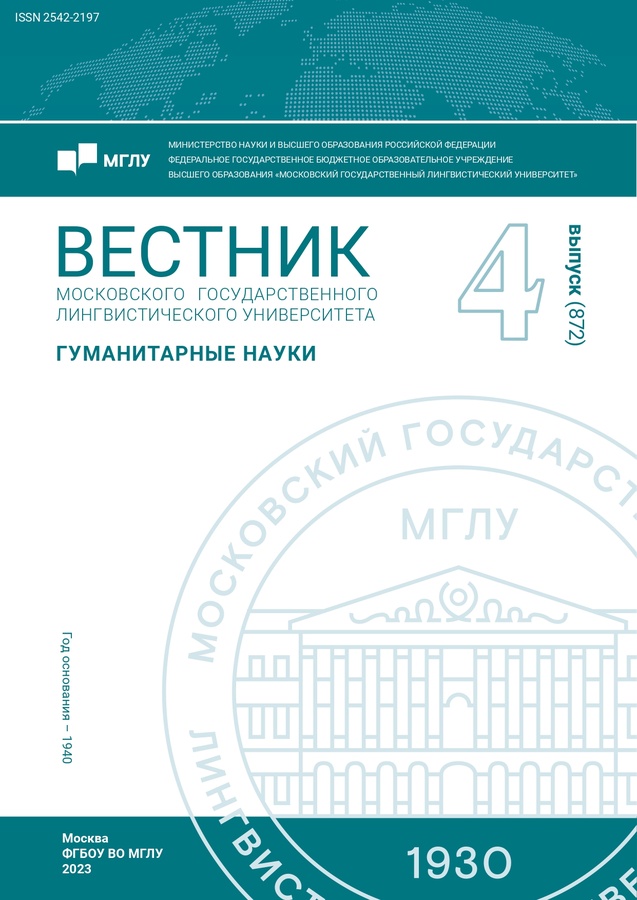The Newest Swedish Vocabulary: Theme Groups, Origin, Word-Formation Features
- Authors: Zhiltsova E.L.1
-
Affiliations:
- Lomonosov Moscow State University
- Issue: No 4(872) (2023)
- Pages: 35-41
- Section: Linguistics
- URL: https://journal-vniispk.ru/2542-2197/article/view/351688
- ID: 351688
Cite item
Full Text
Abstract
The article reviews new words, recorded in the Swedish language in 2021, from the perspective of their origin, word-formation peculiarities and semantics. As a result of the research, conducted with the method of synchronic linguistic description, several theme groups of the newest vocabulary were identified, loanword neologisms and neologisms formed from Swedish words via compounding, contraction and affixation were studied. The list of new words, published in the Språktidningen magazine in 2022, was used as the material for the analysis.
About the authors
Elena Leonidovna Zhiltsova
Lomonosov Moscow State University
Author for correspondence.
Email: el-zhilc@yandex.ru
PhD (Philology), Associate Professor, Associate Professor at the Department of Germanic and Celtic Philology, Faculty of Philology
Russian FederationReferences
- Maslova-Lashanskaya, S. S. (2011). Leksikologiya shvedskogo yazyka = Lexicology of the Swedish language. St. Petersburg: Filologicheskij fakultet Sankt-Peterburgskogo gosudarstvennogo universiteta. (In Russ.)
- Nyordslistan (2022). Språktidningen. Stockholm, 1, 17–25.
- Berkov, V. P. (1994). Norvezhskaya leksikologiya = Norwegian lexicology. St. Petersburg: Izdatelʼstvo SanktPeterburgskogo Universiteta. (In Russ.)
- Zhil’tsova, E. L. (2019). New Trends in the Development of the Vocabulary of Modern Swedish. Vestnik of Moscow State Linguistic University. Humanities, 1(817), 163–174. (In Russ.)
- Malmgren, S.-G. (1994). Svensk lexikologi. Lund: Studentlitteratur.
Supplementary files










